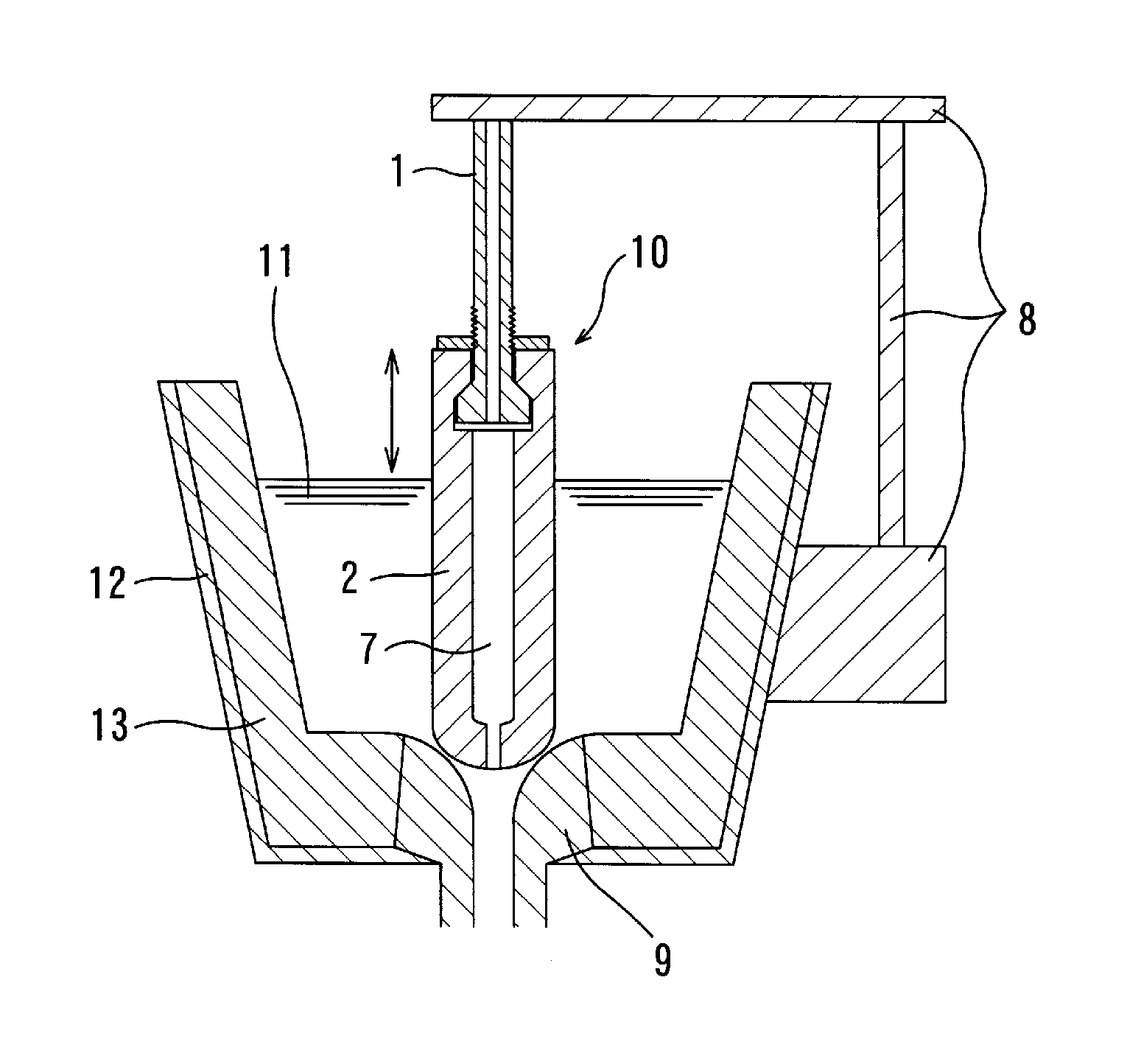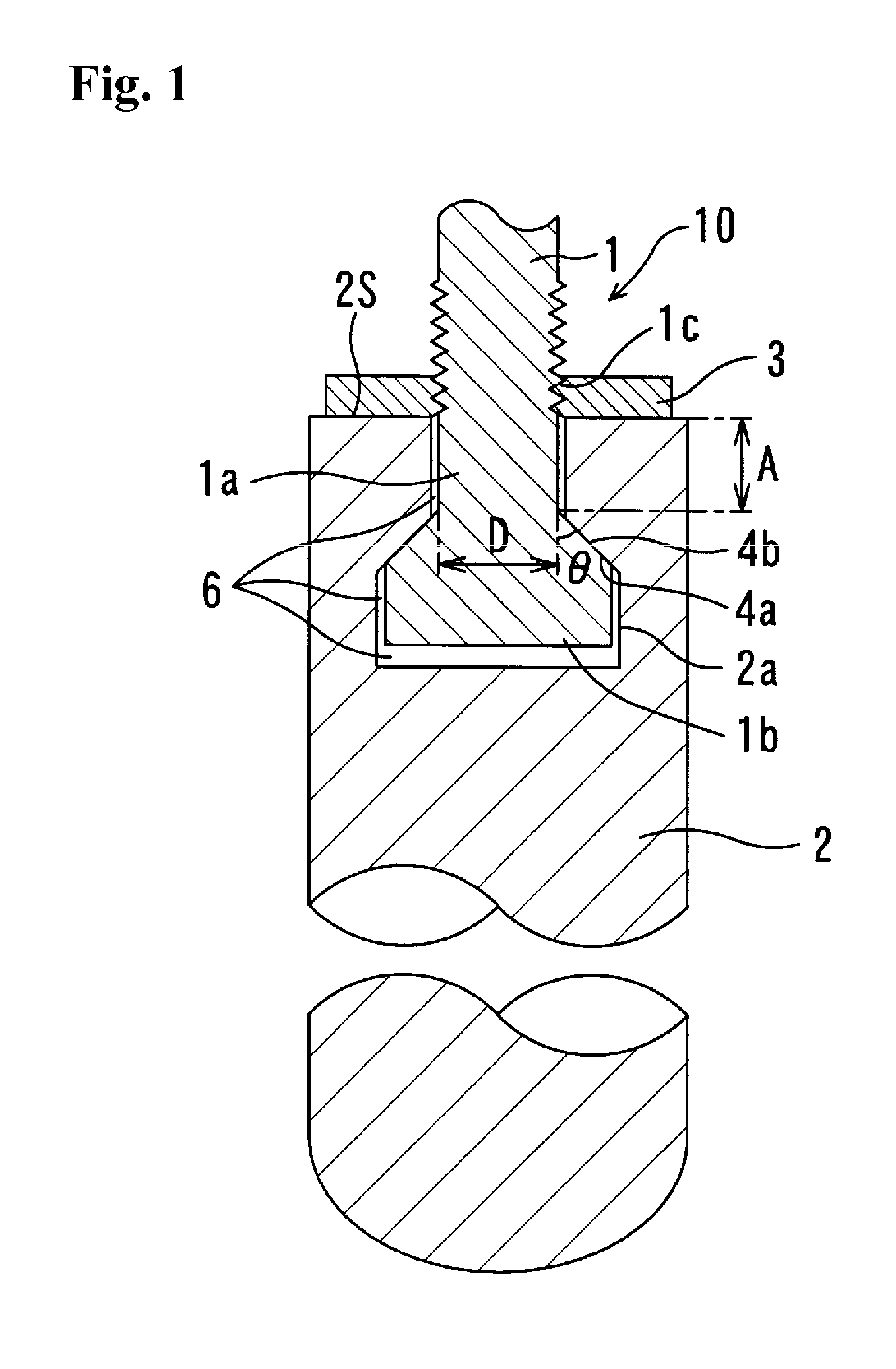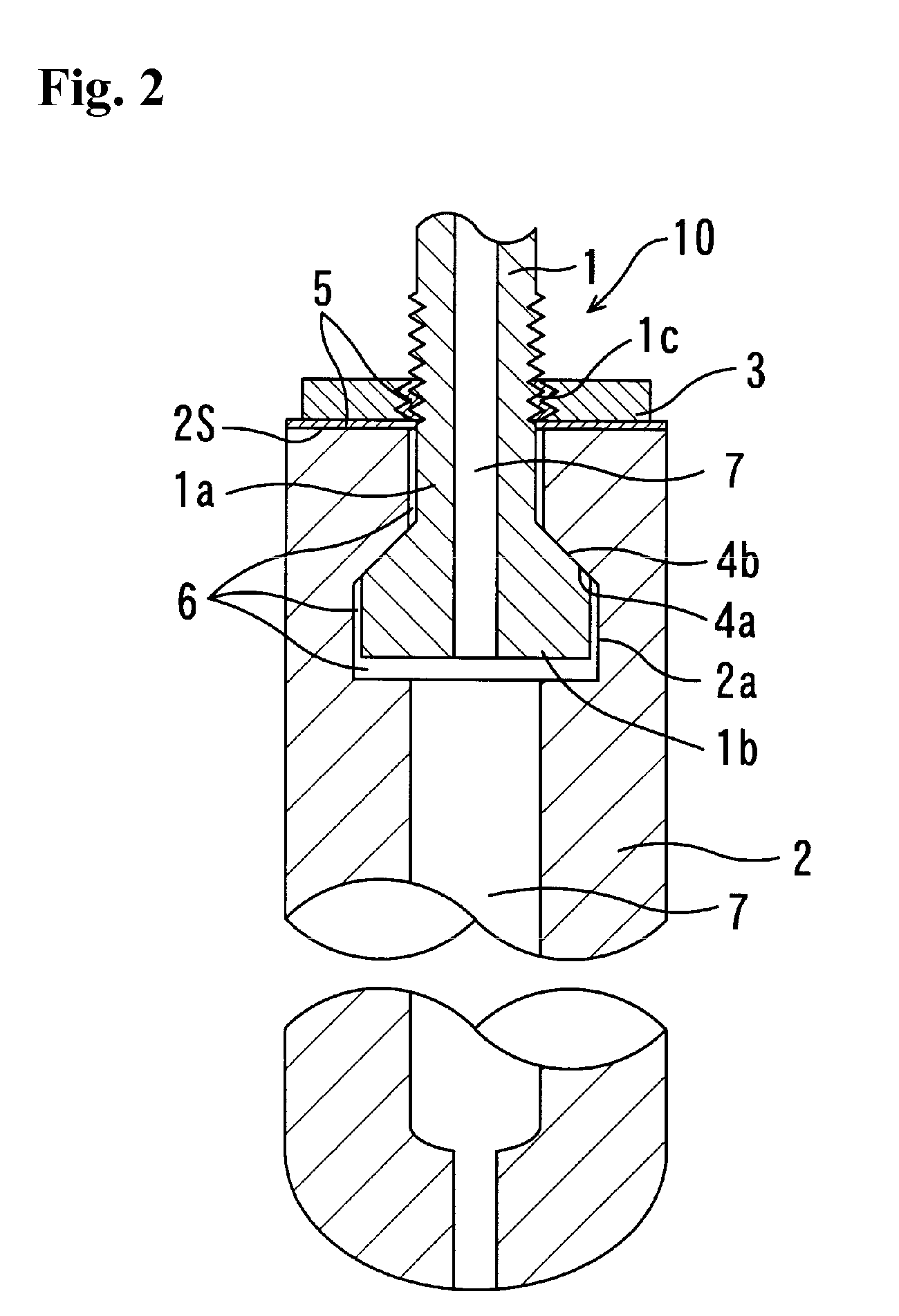Stopper structure and production method therefor
- Summary
- Abstract
- Description
- Claims
- Application Information
AI Technical Summary
Benefits of technology
Problems solved by technology
Method used
Image
Examples
first embodiment
[0081]FIG. 1 is a sectional view showing a stopper structure according to a first embodiment of the present invention.
[0082]A stopper structure 10 illustrated in FIG. 1 comprises a refractory stopper 2, and a metal shaft rod 1 which has a distal end mounted in a mounting hole 2a of the refractory stopper 2 through a space 6 serving as a means for absorbing a thermal expansion of the distal end of the shaft rod 1.
[0083]The distal end of the shaft rod 1 is formed in a stepped configuration which comprises a small-diameter portion 1a formed on the side of a base edge of the shaft rod 1, and a large-diameter portion 1b formed on the side of a distal edge of the shaft rod 1 to have a diameter greater than that of the small-diameter portion 1a. The distal end of the shaft rod 1 has an outer peripheral surface including a first tapered sub-surface 4a between the small-diameter portion 1a and large-diameter portion 1b. The mounting hole 2a of the refractory stopper 2 is formed in a configur...
second embodiment
[0088]FIG. 2 is a sectional view showing a stopper structure according to a second embodiment of the present invention. A stopper structure 10 according to the second embodiment is internally provided with a gas passage 7. A contact / joining mechanism between a shaft rod 1 and a refractory stopper 2 in the second embodiment is the same as that in the first embodiment.
[0089]In the second embodiment, the shaft rod 1 is internally provided with a gas passage 7 for supplying gas into a mounting hole 2a of the refractory stopper 2, and the refractory stopper 2 is internally provided with a gas passage 7 penetratingly extending from the mounting hole 2a to a distal end thereof, so as to inject gas from the distal end of the refractory stopper into molten metal, or gas is supplied to the gas passage 7 of the shaft rod 1 to air-cool the shaft rod 1.
[0090]Considering that each of the shaft rod 1 and the refractory stopper 2 is internally provided with the gas passage 7 in the above manner, in...
third embodiment
[0095]FIG. 3 is a sectional view showing a stopper structure according to a third embodiment of the present invention. The stopper structure according to the third embodiment is designed to divide a shaft rod 1 into a first shaft rod segment 1-1 and a second shaft rod segment 1-2.
[0096]The first shaft rod segment 1-1 has a distal end mounted in a mounting hole 2a of a refractory stopper 2, and a threaded portion 1-1a formed in an outer peripheral surface thereof at a position above an upper edge surface 2S of the refractory stopper 2. The second shaft rod segment 1-2 is threadingly engaged with the threaded portion 1-1a of the first shaft rod segment 1-1, and screwed toward the upper edge surface 2S of the refractory stopper. Thus, a lower edge surface of the second shaft rod segment 1-2 is brought into contact with the upper edge surface 2S of the refractory stopper first shaft rod segment, and the first shaft rod segment 1-1 is moved upwardly, so that a first tapered sub-surface 4...
PUM
| Property | Measurement | Unit |
|---|---|---|
| Electrical conductance | aaaaa | aaaaa |
| Pressure | aaaaa | aaaaa |
| Diameter | aaaaa | aaaaa |
Abstract
Description
Claims
Application Information
 Login to View More
Login to View More - R&D
- Intellectual Property
- Life Sciences
- Materials
- Tech Scout
- Unparalleled Data Quality
- Higher Quality Content
- 60% Fewer Hallucinations
Browse by: Latest US Patents, China's latest patents, Technical Efficacy Thesaurus, Application Domain, Technology Topic, Popular Technical Reports.
© 2025 PatSnap. All rights reserved.Legal|Privacy policy|Modern Slavery Act Transparency Statement|Sitemap|About US| Contact US: help@patsnap.com



